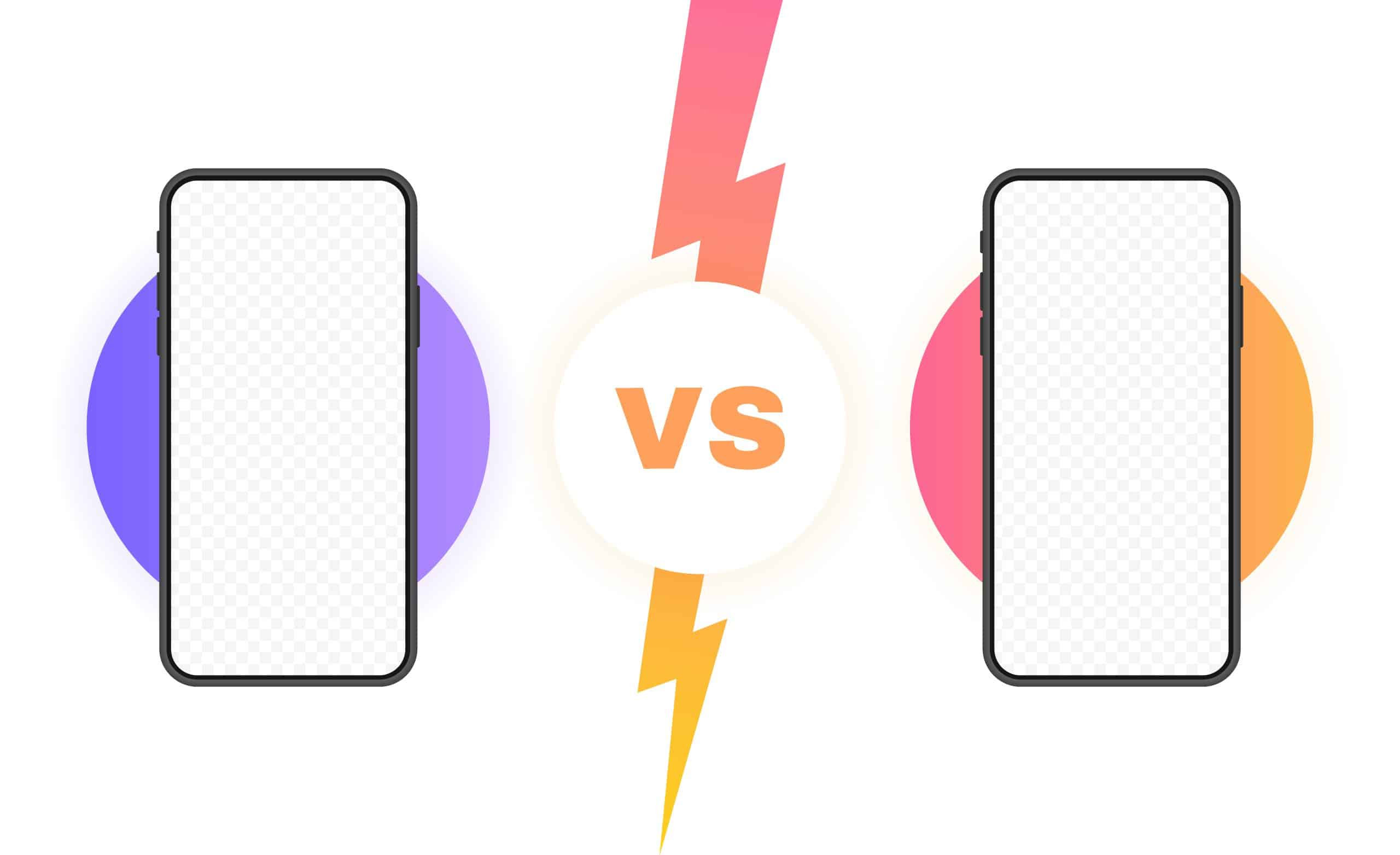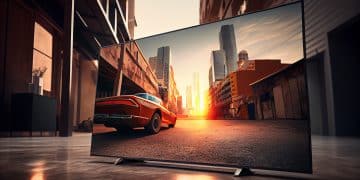Apple vs Samsung 2025: The Ultimate Guide to Choosing the Best Premium Smartphone

The Premium Smartphone Battle of 2025
Current state of premium smartphone market in India
The premium smartphone market in India has shown remarkable growth in recent years. As technology has become more ingrained in daily life, the demand for high-end smartphones has risen, driven by increasing consumer awareness and disposable incomes. In this context of rapid growth, the Apple vs Samsung rivalry has become a defining element of the premium segment, with brands fiercely competing to capture this lucrative market through flagship models boasting cutting-edge features and technologies.
Apple and Samsung’s market leadership and brand perception
Apple and Samsung have established themselves as the undisputed leaders in the premium smartphone category. Their long-standing presence, consistent innovation, and formidable brand loyalty have helped them maintain a strong foothold in the market.
Apple’s iPhone is widely regarded as the epitome of premium quality, merging sleek design with powerful performance. The iOS ecosystem’s seamless integration adds to its allure, making it a top choice for consumers who value an interconnected experience. Samsung, on the other hand, has carved out its niche by delivering impressive hardware innovations and pushing the envelope with its Galaxy series. It is appreciated for offering diverse options tailored to varying consumer preferences, from cutting-edge foldables to highly sophisticated camera setups.

Why these brands dominate consumer choices in the high-end segment
Several factors contribute to Apple and Samsung’s dominance in the high-end segment:
- Innovation and Technology: Both brands consistently introduce groundbreaking technologies, ensuring their flagship models remain at the forefront of the industry.
- Brand Trust and Loyalty: Over the years, Apple and Samsung have built a solid reputation for quality and reliability, fostering a deep sense of trust and loyalty among their consumers.
- Marketing and Ecosystem: Effective marketing strategies and a robust ecosystem of complementary devices and services keep users invested in their respective brands. Whether it’s the seamless integration of Apple’s hardware and software or Samsung’s expansive Galaxy device lineup, the ecosystems enhance user experience.
- Premium Build and Design: Attention to detail in design and build quality sets these brands apart, appealing to consumers who seek both aesthetics and durability.
- Comprehensive After-sales Support: Both brands offer extensive after-sales support, which assures customers of ongoing maintenance and service for their premium devices.
These elements collectively ensure Apple and Samsung remain the go-to choices for discerning buyers in the premium smartphone market, securing their leadership position well into 2025.
While the competition remains intense, the battle between Apple’s iPhone and Samsung’s Galaxy continues to shape the high-end smartphone landscape, as each brand strives to outdo the other with every new release.
| Category | iPhone 16 | Galaxy S25 |
|---|---|---|
| 📱 Display | Super Retina XDR OLED | Dynamic AMOLED 2X |
| ⚙️ Chipset | A17 Bionic | Snapdragon 8 Gen 3 |
| 📷 Camera | Triple-lens system | Quad-lens, 200MP Ultra |
| 🎥 Video Recording | 8K at 30 fps | 8K at 60 fps |
| 🧠 Operating System | iOS 19 | One UI 6 (Android 14) |
| 🔋 Battery Life | All-day usage | Extra-long battery |
| ⚡ Charging | MagSafe, 30W wired | 45W wired, wireless share |
| 💎 Build Quality | Ceramic Shield | Gorilla Glass Victus 2 |
| 🌐 Ecosystem | Seamless Apple integration | Samsung DeX, SmartThings |
| 🔁 Software Updates | 5 years | 4 years + 5 years security |
| 👥 Best For | iOS users, creatives | Android fans, power users |
| 💰 Starting Price | ₹1,00,000 | ₹95,000 |
2025 Flagship Models Overview
Detailed Comparison of iPhone 16 Series vs Galaxy S25 Lineup
When it comes to the 2025 flagship models, the iPhone 16 series and Galaxy S25 lineup are leading the way in premium smartphones. Both Apple and Samsung have strived to outdo each other in terms of performance, design, and features.
Key Specifications and Features of Each Model Variant
iPhone 16 Series
The iPhone 16 series includes the iPhone 16, iPhone 16 Pro, and iPhone 16 Pro Max. Apple continues its tradition of offering high-quality, premium devices:
- Display: OLED Super Retina XDR displays across all models, with Pro models featuring ProMotion technology.
- Chipset: Powered by the new A17 Bionic chip, which promises top-tier performance and energy efficiency.
- Camera: Triple-lens setup with improved sensors and enhanced low-light performance.
- Battery: Improved battery life with support for 30W fast charging and MagSafe technology.
- Operating System: Ships with iOS 19, which includes new features such as enhanced privacy controls and productivity tools.
Galaxy S25 Lineup
Samsung’s Galaxy S25 lineup includes the Galaxy S25, Galaxy S25+, and Galaxy S25 Ultra. These models pack features designed to deliver a versatile and powerful experience:
- Display: Dynamic AMOLED 2X displays, with the S25 Ultra boasting a 144Hz refresh rate.
- Chipset: Equipped with the new Snapdragon 8 Gen 3 chipset, focusing on performance and AI capabilities.
- Camera: Quad-lens setup on the Ultra variant with a 200MP main sensor, offering unmatched zoom and detailed photos.
- Battery: Large batteries with support for 45W fast charging and wireless PowerShare.
- Operating System: Runs on One UI 6.0 based on Android 14, providing a seamless and customizable experience.
Popularity and Market Positioning in India
Both the iPhone 16 series and Galaxy S25 lineup have captured significant attention in the Indian market. Apple’s strong brand loyalty ensures a solid base of customers eagerly upgrading to the latest iPhone models. The premium design, cutting-edge technology, and seamless integration with the Apple ecosystem keep the iPhone 16 series in high demand.
Samsung, on the other hand, continues to appeal to a broad spectrum of consumers, thanks to its varied product lineup and customizable features. The Galaxy S25 Ultra especially attracts tech enthusiasts and professionals looking for a powerhouse device with advanced camera capabilities and powerful performance.
The competition between these two giants will undoubtedly shape consumer choices and drive innovation in the high-end smartphone segment.
Performance and Technical Specifications
A17 vs Snapdragon Chipset Comparison
For 2025, the iPhone 16 series features Apple’s A17 Bionic chip, while the Galaxy S25 series is equipped with the Snapdragon 8 Gen 3. The A17 Bionic, built on a 3nm process, focuses on energy efficiency and powerful performance. It features six cores divided into two high-performance cores and four efficiency cores, accompanied by a 16-core Neural Engine for advanced AI tasks. In benchmarks, the A17 consistently outperforms in single-core performance.
On the other hand, the Snapdragon 8 Gen 3, also built on a 3nm process, highlights multi-core performance and graphics capabilities. It features an octa-core CPU and an Adreno 780 GPU, making it a powerhouse for gaming and multitasking. In multi-core benchmarks, it often edges out the A17. Both chipsets are top-of-the-line, each excelling in different areas.
RAM, Storage Options, and Real-World Performance Metrics
The iPhone 16 series offers 8GB of RAM across all models, with storage options ranging from 128GB to 1TB. Real-world usage shows that iOS manages memory efficiently, delivering smooth performance even with lower RAM compared to its competitors.
The Galaxy S25 lineup starts with 12GB of RAM and goes up to 16GB for the Ultra model. Storage options begin at 256GB and can reach up to 1TB. The higher RAM and extensive storage options ensure that the Galaxy S25 can handle intensive multitasking and large app loads more seamlessly.
Battery Life and Charging Capabilities Comparison
Battery life has always been a critical factor for consumers. The iPhone 16 series is equipped with battery capacities ranging from 3500mAh to 4200mAh. Optimizations in iOS 19 and the A17 chip’s efficient design provide impressive battery life, often lasting through a full day of heavy use.
The Galaxy S25 series, with batteries ranging from 4000mAh to 5000mAh, leverages the power efficiency of the Snapdragon 8 Gen 3 and One UI optimizations. The larger battery capacities translate to longer usage times, especially for the larger models.
Both series offer fast charging capabilities. Apple’s MagSafe provides wireless and wired charging speeds up to 30W, while Samsung offers 45W wired charging and 15W wireless charging. Both ensure quick top-ups, though Samsung’s wired charging speeds are slightly faster.
As we delve into these flagship features, it becomes clear that each device offers a unique blend of power and efficiency, catering to a wide range of user needs.
Camera Systems and Multimedia
Main Camera Features and Capabilities
The 2025 flagship smartphones from both Apple and Samsung highlight significant advancements in their camera systems. The iPhone 16 series includes a triple-lens setup with a 108MP main sensor, an ultra-wide lens, and a telephoto lens. This combination ensures high-quality images with incredible detail, dynamic range, and low-light performance.
On the other hand, the Galaxy S25 lineup is equipped with a quad-camera system featuring a 108MP main sensor, an ultra-wide lens, a periscope telephoto lens with 10x optical zoom, and a depth sensor. Samsung’s camera technology remains renowned for its versatility, providing one of the most comprehensive photography experiences.
Video Recording Capabilities and Stabilization Technology
When it comes to video recording, the iPhone 16 series offers 8K video recording at 30 fps, alongside improved optical image stabilization (OIS) and sensor-shift technology for smoother motion capture. Apple’s focus on cinematic mode provides professional-grade video with advanced depth effects.
Similarly, the Galaxy S25 series supports 8K video recording at 60 fps. Samsung’s Super Steady OIS and electronic image stabilization (EIS) work in tandem to deliver incredibly stable video footage. The Galaxy S25’s video capabilities also include advanced HDR for capturing vibrant and accurate colors in various lighting conditions.
Special Photography Modes and AI Enhancements
Both Apple and Samsung elevate their camera systems with innovative special modes and AI enhancements. The iPhone 16 series features a Smart HDR 5.0 mode, Night mode portraits, and Deep Fusion technology that uses AI to enhance texture, detail, and color in every shot.
Samsung’s Galaxy S25 series counters with its Scene Optimizer and Single Take AI, which intelligently select the best photo mode based on the scene. Samsung’s Pro Mode provides granular control over camera settings, appealing to photography enthusiasts seeking a DSLR-like experience on their smartphone.
From superior camera hardware to state-of-the-art AI-driven software enhancements, both Apple and Samsung have fortified their flagship models to cater to the photography needs of all users.
Software Experience and Updates
iOS vs One UI Android Experience
The iOS vs One UI debate has been ongoing, with each having its own strengths. Apple’s iOS 19, which comes with the iPhone 16 series, continues to excel in providing a smooth, intuitive, and secure user experience. iOS is known for its seamless integration with other Apple devices, making it particularly appealing to users deeply enmeshed in the Apple ecosystem.
On the other hand, Samsung’s One UI 6 runs on the Galaxy S25 lineup. One UI has made significant strides, focusing on user customization and multitasking capabilities. It offers a highly personalized experience, allowing users to tailor their phones to their preferences. One UI is built on top of Android 14, ensuring a broad range of app compatibility and customization options.
Software Update Policies and Long-Term Support
When it comes to software updates, both Apple and Samsung have robust policies, but their approaches differ slightly. Apple is renowned for its consistent long-term support. Typically, iPhones receive software updates for about five years from their release date. This means that users of the iPhone 16 series can expect updates and new features well into 2030.
Samsung has also improved its update policies significantly. Galaxy S25 series owners can expect at least four years of Android OS updates and five years of security patches. This commitment demonstrates Samsung’s dedication to providing a secure and up-to-date experience for their users over an extended period.
Privacy Features and Security Considerations
Privacy and security are major selling points for both Apple and Samsung, but each brand approaches these aspects uniquely.
Apple: iOS is known for its stringent privacy features. The App Tracking Transparency feature ensures that users have to give explicit permission for apps to track their activity across other apps and websites. iOS also includes private relay and enhanced encryption protocols, making it a preferred choice for privacy-conscious users.
Samsung: One UI 6 also emphasizes privacy and security with features like Samsung Knox, which provides a defense-grade security platform to protect user data. Additionally, Samsung Pass allows secure access to apps and websites using biometric data. Samsung’s Secure Folder creates a private and encrypted space on the device to protect sensitive information.
Both platforms offer robust measures to ensure user data remains private and secure, catering to the growing concern about digital privacy.
With both Apple and Samsung committed to offering superior software experiences, the choice between iOS and One UI ultimately comes down to personal preference and ecosystem loyalty. In the next chapter, we will explore the ecosystem integrations offered by these two tech giants, highlighting the unique benefits and limitations associated with each.
Ecosystem Integration
Apple Ecosystem Benefits
Apple’s ecosystem is renowned for its seamless integration across various devices, including Mac, iPad, and Apple Watch. The iPhone 16 series fits perfectly within this well-oiled system, allowing for synchronized experiences across all gadgets. This synchronicity means you can start a task on one device and effortlessly continue it on another, enhancing productivity and convenience.
The Handoff feature allows users to switch devices without losing context, whether it’s writing a document, browsing the web, or reading an email. Apple’s Universal Clipboard lets you copy content on one Apple device and paste it on another. Apple Watch adds additional layers of integration, such as unlocking your Mac or controlling your phone directly from your wrist. This tightly knitted ecosystem fosters a sense of unity and an experience that is hard to replicate.
Samsung Ecosystem Advantages
Samsung also offers a robust ecosystem, especially with its Galaxy devices. The Galaxy S25 pairs seamlessly with other Samsung products, such as the Galaxy Tab, Galaxy Watch, and Galaxy Buds. Samsung Dex is a standout feature that turns your phone into a desktop-like experience when connected to a monitor. This blur between mobile and desktop computing is a unique advantage that Apple’s ecosystem currently does not match.
The SmartThings app integrates IoT devices, making it simpler to manage home appliances right from your phone. Samsung’s Link to Windows feature offers a deep connection with Windows PCs, allowing you to access phone apps and notifications on your computer. This ecosystem offers flexibility and multiple touchpoints, ensuring users can leverage their devices in a variety of uses.
Cross-Platform Compatibility and Limitations
While both Apple and Samsung ecosystems offer great benefits, they come with limitations due to the level of integration within their systems. Cross-platform compatibility becomes challenging if you own both brands’ devices. Features like Apple’s Handoff or Samsung Dex don’t work beyond their respective ecosystems, leaving users needing to find third-party solutions for integration.
For users heavily invested in one ecosystem, the experience is cohesive and intuitive. However, the cost of switching ecosystems can be high due to the hardware, services, and applications tied to them. This “lock-in” makes it harder for consumers to move between different brands freely without losing some functionalities and conveniences.
Apple and Samsung have built ecosystems that are pivotal to their market positioning and user loyalty. Consumers choosing between these brands must carefully consider their current devices and how well they will integrate into their desired ecosystem for a seamless user experience.
Transitioning from here, we will delve into the pricing and value propositions of the iPhone 16 series and Galaxy S25 lineup, providing a comparative analysis to help you in making the best purchase decision.
Price Analysis and Value Proposition
Pricing Comparison Across Different Models and Variants
When it comes to pricing, Apple and Samsung position their premium smartphones in a way that reflects their high-end status. The iPhone 16 series starts at ₹1,00,000 for the base model and goes up to ₹1,50,000 for the Pro Max variant. Meanwhile, the Galaxy S25 lineup starts at ₹95,000 and can go up to ₹1,45,000 for the Ultra variant. Both brands ensure that their flagship models are priced competitively to attract high-end consumers looking for the best in technology and innovation.
Value Retention and Resale Market Analysis
A key aspect of buying premium smartphones is understanding their value retention and resale potential. Apple historically has an edge in this area. iPhones are known for holding their value better than most Android devices, including Samsung’s. For instance, a year-old iPhone 16 can retain up to 70% of its original value, while a year-old Galaxy S25 may retain around 60%. This is largely due to Apple’s strong brand recognition and consistent software updates, which keep older models running smoothly for longer periods.
Available Purchase Options and Deals in India
For Indian consumers, there are several enticing purchase options and deals available. Both Apple and Samsung offer financing schemes, cashback offers, and exchange bonuses. For instance:
- Apple: iPhone 16 series buyers can benefit from 0% EMI options, trade-in programs, and seasonal discounts during festive sales.
- Samsung: The Galaxy S25 lineup is often bundled with offers like no-cost EMIs, bank cashback deals, and special exchange offers.
These schemes make it easier for consumers to afford these premium devices by spreading the cost over several months or providing additional value through trade-ins and bank offers.
Apple and Samsung’s strategies vary, but both aim to provide consumers with incentives to choose their flagship models. As we explore further, it becomes clear that the overall value proposition goes beyond just price and encompasses aspects like ecosystem integration, long-term software support, and more.
Buyer’s Guide by User Profile
Choosing between Apple’s iPhone 16 series and Samsung’s Galaxy S25 lineup can be daunting. To make this process easier, we’ve tailored our recommendations to suit different user profiles and budget considerations.
Photographers
For photography enthusiasts, both the iPhone 16 Pro Max and the Galaxy S25 Ultra are powerful contenders. They feature 108MP main sensors, advanced stabilization, and AI-enhanced modes:
- iPhone 16 Pro Max: Superior low-light performance and user-friendly interface.
- Galaxy S25 Ultra: More versatile zoom capabilities and customizable camera app.
Gamers
For gamers requiring top-tier performance, the iPhone 16 Pro and Galaxy S25+ stand out:
- iPhone 16 Pro: A17 Bionic chip delivers impeccable performance and energy efficiency.
- Galaxy S25+: Snapdragon 8 Gen 3 chip offers excellent GPU capabilities, enhanced by Samsung’s Game Booster.
Professionals
Professionals need robust devices with excellent multitasking abilities. Both the iPhone 16 and Galaxy S25+ offer great performance:
- iPhone 16: Integrates seamlessly with Mac and iPad, offering a cohesive work environment.
- Galaxy S25+: Samsung DeX transforms the phone into a desktop-like experience, perfect for multitasking.
Budget Considerations
High-end Budget (₹95,000 – ₹1,25,000)
- Best Choice: iPhone 16 Pro Max or Galaxy S25 Ultra.
- Value Proposition: Best-in-class features, longest software support, and higher resale value.
Mid-range Budget (₹75,000 – ₹1,00,000)
- Best Choice: iPhone 16 or Galaxy S25+.
- Value Proposition: High performance and advanced features without the premium cost.
Entry Premium (₹60,000 – ₹75,000)
- Best Choice: Previous year’s models like iPhone 15 or Galaxy S24.
- Value Proposition: Substantial savings with a slight compromise on the latest specs.
Long-term Ownership Considerations
When selecting a device, long-term factors are crucial. Apple typically offers five years of software updates and maintains high resale value, making the iPhone 16 series ideal for those who prefer to use their phone for several years. Conversely, Samsung guarantees four years of OS updates and five years of security patches, providing solid future-proofing for the Galaxy S25 series.
Each user profile has distinct needs, and this guide aims to help you find the best device tailored to your requirements.
Frequently Asked Questions
Common Concerns about iOS vs Android Security
One of the most pressing concerns for consumers is the security of their smartphones. iOS and Android have distinct security models that cater to different user needs.
iOS Security
Apple’s iOS is renowned for its robust security features. The closed ecosystem ensures that apps are thoroughly vetted before they make it to the App Store. Apple’s stringent app review process minimizes the risk of malicious software infiltrating user devices. Additionally, features like App Tracking Transparency provide users with more control over their data, keeping privacy threats at bay.
Android Security
Samsung’s One UI, based on Android, also offers a strong security framework. Samsung Knox provides a multi-layered defense system, protecting the device from hardware to software levels. However, the openness of the Android platform means that it relies more heavily on user vigilance and the installation of trusted apps from the Google Play Store.
Durability and Long-Term Reliability Comparisons
When investing in a premium smartphone, durability and long-term reliability are crucial considerations.
iPhone Durability
The iPhone 16 series continues Apple’s tradition of building robust and long-lasting devices. With the Ceramic Shield front cover, the risk of screen damage from drops is significantly reduced. Apple’s commitment to software updates ensures that older devices remain functional and secure, extending their lifespan.
Galaxy Durability
The Galaxy S25 lineup is built to withstand everyday wear and tear. Featuring Gorilla Glass Victus 2 and sophisticated water and dust resistance (IP68 rating), these devices can handle tough conditions. Like Apple, Samsung also provides extensive software support, ensuring the longevity of its devices.
Ecosystem Lock-In Considerations
Ecosystem lock-in is when consumers become dependent on a particular brand’s range of interconnected products and services.
Apple Ecosystem
The Apple ecosystem’s seamless integration across devices like Mac, iPad, and Apple Watch is compelling. Features like Handoff, Universal Clipboard, and Continuity Camera make tasks smoother and more efficient. However, once deeply invested, switching to a different ecosystem can be challenging and expensive.
Samsung Ecosystem
Samsung offers a strong ecosystem with Galaxy devices, including laptops, smartwatches, and home appliances. The ability to sync data and notifications across devices, coupled with features like Samsung DeX, makes for a cohesive user experience. Still, transitioning away from this ecosystem to another can also entail significant costs and inconveniences.
Thus, when comparing iOS and Android, it’s essential to weigh security, durability, and ecosystem lock-in based on individual preferences and priorities. The next discussion will further delve into how these aspects shape the overall user experience of iPhone and Galaxy users.






